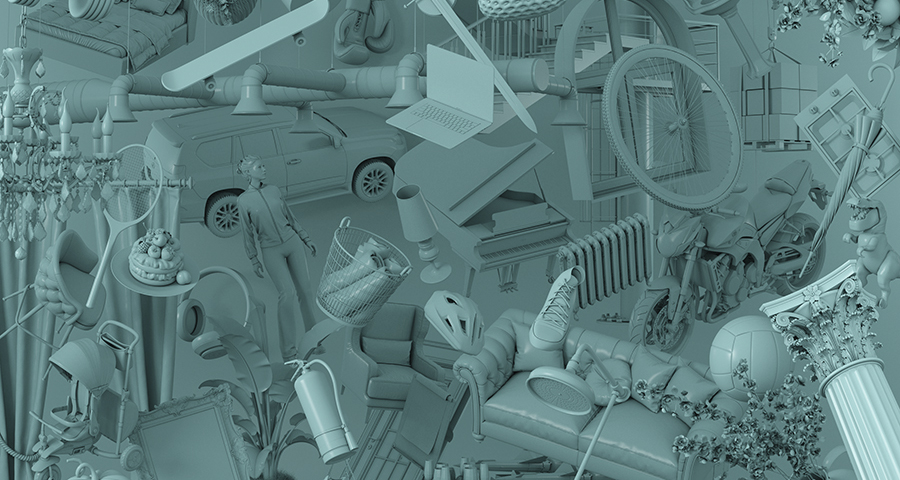To create 3d character models, models of room interior, cars, architecture, the environment and other objects, designers and modelers use different modeling methods. The methods are applied individually or in combination, depending on the tasks.
In the article, we will talk about existing methods of 3D modeling and their features.
Polygonal modeling
One of the very first technologies for 3D models creation. At the beginning, the technique was based on the points’ coordinates entry. Each point has three coordinates on the X, Y, and Z axes. The coordinates’ vertices are connected into edges that form a triangle — polygon.
In this case, the polygon can have either three or four vertices:
- 3 vertices make a triangulated polygon.
- 4 vertices make a quadriagnulated polygon.
An object can consist of different planes. At the same time, regardless of the number of vertices, each polygon can have a color and texture. When polygons are combined, an object of any shape and complexity can be formed.
When polygons are connected to each other, they form a polygonal grid (object).
But here comes the question: how to get rid of the faceted (too geometric) edges of the object? To make the edge smooth or smoothed, modelers use very small polygons. The smaller the plane, the smoother the edge will be.
There are two concepts in polygonal 3D modeling:
- A low-polygonal object is a model with a small number of polygons.
- A highly polygonal object is a model consisting of a large number of planes, which allows you to enlarge the image of the object.
Today, polygonal technology is used for the creation of computer games and movie scenes. But it is no longer so popular and is giving way to more advanced techniques.
Spline modeling
Polygons are not used in this technology. The main tool is a spline, or a three-dimensional curve. To create a spline line, the modeler sets points in space. Each point has its own coordinates. And depending on the given location, the smoothness of the curve will vary.
Splines form a framework that wraps around a three-dimensional body. The frame defines the shape of the object, creating its surface.
In addition to spline lines, basic primitives are used to form the model: arcs, spirals, rectangles, ellipses, text, and other parametric objects.
The main advantage of the spline is its flexible settings. You can always change the shape of the line/primitive, if necessary.
NURBS-modeling
NURBS technology, unlike polygonal, involves the use of B-splines. It allows you to create models without sharp edges. The shape is smooth. Because of this feature, NURBS is very popular today in the organics creation: game characters, people, animals, birds, and plants.
The shape is created with the help of curves:
- P-curves. To control them, vertices (points) are used, which are located on the surface of the object itself.
- CV curves. They are controlled with the help of points located outside the object.
Which technology should I choose?
The choice of the 3D modeling method depends on the tasks set:
- The type of the object.
- The need to scale the model.
- The degree of accuracy of the model.
If the modeler tries to create the most accurate model that will scale, then he chooses a spline technology. The spline will allow you to achieve accuracy. As the model is scaled, its quality will always remain high.
If a spline is used, the accuracy is created at the prototype stage.
In polygons, you can set the level of detailing. The more planes, the higher the detailing. If the object consists of 260 polygons, then the detailing is equal to 35 degrees. If more than 1000 polygons are used, then the degree of detailing will be 10 degrees. However, even when the model is reduced, the angle between the planes will be visible.
3D models are saved in two formats. At the prototype stage, the STL format (polygonal) is used. The IGES (spline) format can also be used when saving a prototype. In addition, IGES is easy to convert into STL. However, it is impossible to convert STL into IGES.
If it is necessary to create an organic object, then the NURBS technology is used.
What programs are used for three-dimensional modeling?
Professional developers use different programs to create movie scenes, special effects, computer games, commercials, or VR objects: among them are 3d Max, Maya, Softimage, Mudbox, ZBrush, Modo, Cinema 4D, and other software.
Today, it is not necessary to spend a lot of time and effort on creating three-dimensional objects. You can download the 3D model from the online platform 3Dbaza. The marketplace offers a large collection of ready-made models in different categories, from interior to architecture, characters, and transport. The online platform works around the clock, and you can pay for the purchase of digital content with bank cards on the website.
Besides that, each person who uses the platform has a personal account where they can keep all the models they buy.

